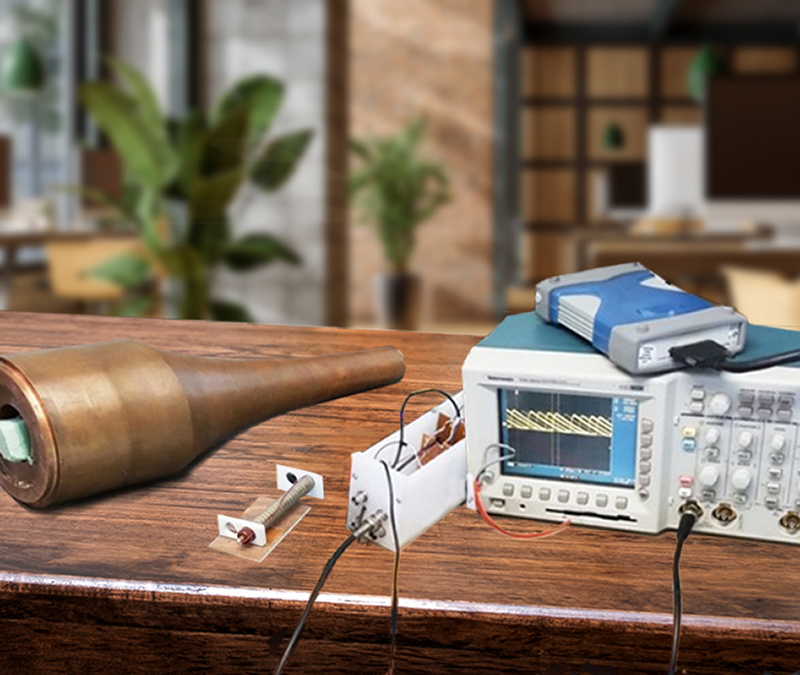Portable Gamma Radiation Detector
Electronic collimation provides directional radiation sensing without heavy shielding

Innovators at ERDC’s Environmental Laboratory have developed a compact, lightweight gamma radiation detector that provides directional sensing without the need for the large, heavy shielding — a necessary part of every physical collimator. Until now, this shielding prevented gamma radiation detectors from being used easily in the field. Smaller detectors, however, could determine only the presence but not the direction of radiation. By using electronic collimation, ERDC’s breakthrough detector combines the best of both worlds: a high-performance system that yields not just a “count” but the source of radiation, in a field-ready package.
ERDC’s system incorporates a radiation sensor, a digitizer, and a processor to transform analog signal waveforms into digital pulse waveforms, which a comparison method uses to identify both presence and directionality of gamma radiation. This electronic collimation process eliminates the limitations previously imposed by heavy shielding to produce an efficient, low-cost detector that meets the critical need for directional sensing in the field.
Benefits:
- Portable: Electronic (vs. physical) collimator enables a lighter weight (<5 kg) than existing detectors
- Small: Electronic collimation enables significantly smaller form factor (<800 cm3) than state of the art
- Low-cost: Low power requirements and absence of shielding materials saves expense
- Efficient: Strong signal-to-noise ratio
- Versatile: Detects gamma radiation in both land and water
Applications:
- Remediation (e.g., radioactive contamination monitoring, aqueous radiological contamination)
- Homeland security (e.g., explosive threats, border patrol, illicit trafficking)
- Nuclear Industry (e.g., waste monitoring, reactor accidents)
- Recycling/Manufacturing
- Law enforcement (e.g., emergency response)
- Seaport security
- Research (e.g., EPA, NOAA)
- Mining (e.g., radioactive ores)
- Unmanned Systems (e.g., drones, unmanned aerial vehicles, unmanned ground vehicles)

